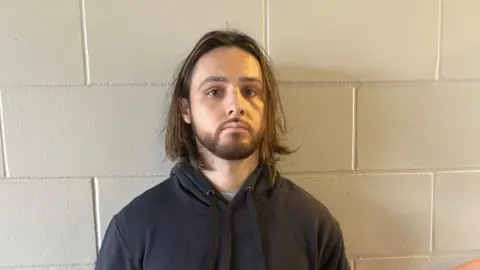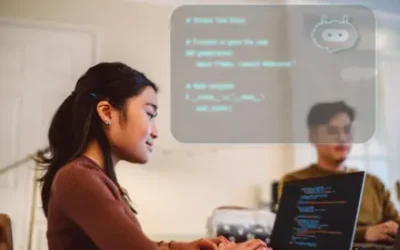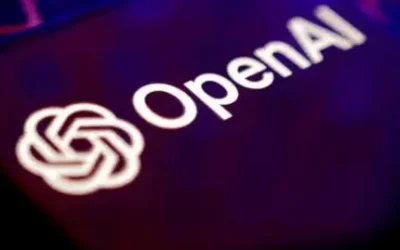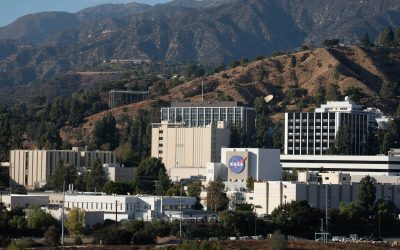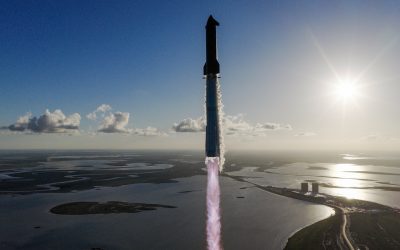Authorities in Los Angeles have arrested a 29-year-old man on suspicion of starting the catastrophic Pacific Palisades wildfire. The blaze, which erupted in January, was responsible for 12 fatalities and the destruction of over 6,000 homes.
According to Justice Department officials, digital evidence recovered from Jonathan Rinderknecht’s devices included an image he created using ChatGPT, which depicted a city engulfed in flames.
On January 7, a fire — ranking among Los Angeles’ most destructive blazes in history — erupted near a hiking trail that overlooked an affluent coastal neighborhood.
Concurrently, the Eaton Fire erupted in the Los Angeles area, claiming 19 lives and incinerating 9,400 structures. The specific cause of that particular inferno remains undetermined.

The Palisades fire ravaged more than 23,000 acres (9,308 hectares), inflicting an estimated $150 billion (£112 billion) in damage.
The relentless inferno raged for over three weeks, decimating entire neighborhoods and leaving widespread destruction across parts of Topanga and Malibu.
The devastating fires claimed thousands of properties, a toll that tragically included the residences of notable figures such as Mel Gibson, Paris Hilton, and Jeff Bridges.

Mr. Rinderknecht was taken into custody in Florida on Tuesday and subsequently charged with destruction of property through arson. Acting US Attorney Bill Essayli formally announced the charges during a news conference held Wednesday in Los Angeles.
Mr. Essayli conveyed his optimism, stating the arrest is anticipated to provide a degree of justice for everyone affected.
Authorities have indicated that additional, more serious charges, specifically murder, could still be filed.
Mr. Rinderknecht attended a court session in Florida on Wednesday, where he opted not to enter a formal plea.
He is scheduled to appear before the US District Court in Orlando on Thursday for a bond hearing. A formal plea is not anticipated until his arraignment hearing, which is slated to take place in Los Angeles in the coming weeks.
Authorities confirmed that Mr. Rinderknecht, who had previously resided and worked in California, relocated to Florida a brief period after the fire.

The Lachman fire, the inaugural blaze reportedly ignited by Mr. Rinderknecht, erupted on New Year’s Day.
Investigators confirm that despite a swift initial response from fire crews, the blaze lingered, smoldering unseen within the underground root systems of thick vegetation. It then erupted anew, breaking through to the surface during a subsequent windstorm.
Officials confirmed the suspect possessed an intimate knowledge of the Pacific Palisades, a familiarity attributed to his past residency in the community. He had reportedly lived merely one block from the Skull Rock Trailhead, the precise location where he is alleged to have started the fire.
The indictment alleges that on New Year’s Eve, following the completion of an Uber fare, the individual ignited an object with an open flame.
One of two passengers who rode with Mr. Rinderknecht earlier on New Year’s Eve subsequently informed investigators that the driver had appeared agitated and angry.
Investigators leveraged his mobile phone data to determine his precise location when the fire erupted on January 1. However, when pressed for details, he allegedly provided false information to authorities, claiming he was situated near the bottom of the trail.
Uber clarified that Mr. Rinderknecht was not actively using its ride-sharing application at the time of the blaze. Despite this, the company collaborated closely with the federal Bureau of Alcohol, Tobacco, Firearms and Explosives (ATF), supplying GPS data and other critical information to assist in pinpointing his whereabouts.
The company confirmed it immediately revoked Mr. Rinderknecht’s platform access after being informed of his suspected involvement in the fire. This action was taken despite his successful completion of an initial background check in 2023 and subsequent annual screenings.

Investigators reportedly uncovered additional digital evidence on Mr. Rinderknecht’s phone, further linking him to the incident. Among these findings were videos he had personally recorded of emergency crews actively battling the blaze.
Phone records revealed the individual made repeated attempts to call 911 shortly after midnight on New Year’s Day. Connectivity proved challenging due to unreliable mobile reception at the trailhead, preventing most calls from connecting. However, a screen recording captured his persistent efforts to reach emergency services and notably, one instance where he successfully made contact with a dispatcher.
Mr. Rinderknecht also tasked ChatGPT with a query regarding accountability, specifically asking if an individual bears fault for a fire ignited by their cigarettes.
Authorities reported the suspect sought to retain proof of his efforts to help douse the flames.
He allegedly attempted to generate evidence to support a less incriminating explanation for the fire’s origin, according to the indictment.
During an interview on January 24, investigators observed Mr. Rinderknecht exhibiting clear signs of nervousness. They specifically noted a distinct pulsation in his carotid artery whenever he was questioned about the fire’s origin.
According to investigators, Mr. Rinderknecht utilized ChatGPT in July 2024, five months prior to the fire he is accused of setting, to generate an image. His request described a “dystopian painting” featuring a burning forest and a multitude of individuals fleeing the blaze.
Centrally depicted within the artwork, a vast populace experiencing poverty is shown striving to bypass a monumental gate, prominently adorned with a large dollar symbol.
Beyond the imposing gates and extensive walls lies an exclusive enclave, home to a concentrated collective of the world’s wealthiest individuals.
As widespread destruction unfolds and humanity endures profound struggle, a specific group is depicted as calmly observing the turmoil, seemingly finding amusement and engaging in festive revelry.
Roughly one month before the fire Mr. Rinderknecht is accused of starting, he allegedly entered a prompt into the AI chatbot ChatGPT. The text within this prompt reportedly stated: “I literally burnt the Bible that I had. It felt amazing. I felt so liberated.”
An outside review into the fire that was commissioned by Los Angeles County supervisors found that “outdated policies” for sending emergency alerts had delayed evacuation warnings, among other official failings.
California Governor Gavin Newsom called the arrest an important step toward “bringing closure to the thousands of Californians whose lives were upended”.
He added that the state was supporting the federal investigation into the fire.

Hours after Mr Rinderknecht’s arrest, the Los Angeles City Fire Department (LAFD) released its long-awaited After-Action Review Report (AARR) on the Palisades Fire, which detailed the first 36 hours of the department’s response.
A recent report, compiled to identify critical lessons from the wildfire response and enhance future preparedness, concluded that firefighters operated with insufficient resources. This deficit was particularly pronounced given the red flag weather conditions and hurricane-force winds that intensified the blaze.
LAFD listed nearly 100 challenges that firefighters faced during the Palisades fire, which burned for 25 days and forced many fire responders to work for 36 to 48 hours straight.
“Responders were faced with the inevitable consequences of a perfect storm: dry vegetation, unrelenting and unusual wind activity, significant ember cast, a landscape packed with combustible vegetation, large vulnerable structures, a diminishing water supply, and a loss of aerial suppression support,” the report said.
Additionally, firefighters were unable to secure the origin of the fire, faced issues recalling off-duty firefighters to respond and blamed fire chiefs with little experience for handling a blaze of that magnitude.
Delays in communicating evacuation orders and issues with arranging effective evacuations and traffic also created problems.
LAFD Interim Fire Chief Ronnie Villanueva, who replaced sacked fire chief Kristin Crowley, said that he hoped the report “strengthens public confidence in the Los Angeles Fire Department’s readiness to respond to any future wildfires”.
The department, he said, has since implemented several new processes to protect the city, including upgrading communications technology.
Newsom’s office has also requested a review by the nation’s leading fire safety researchers.

